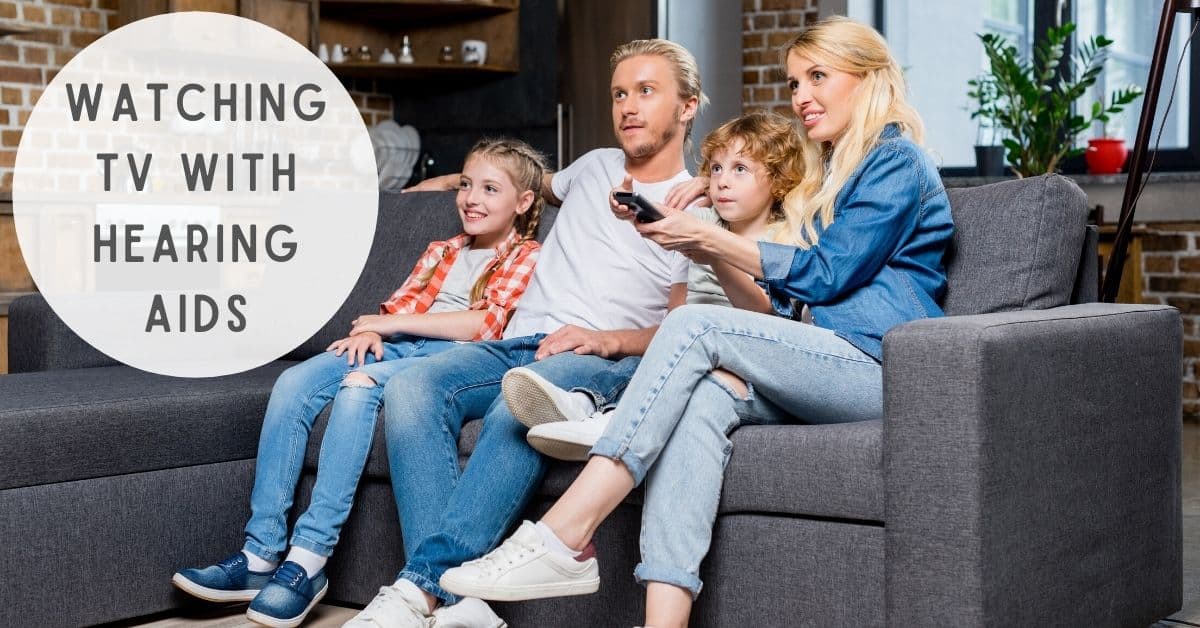When you have hearing loss, one of the first things you’ll notice is how hard it is to hear the TV. You find yourself turning up the volume a little more every week. Unfortunately, making the TV louder doesn’t make the dialogue any easier to understand. There are a few ways that hearing aids can help you watch TV.
Don’t Turn Up the Volume
If you often turn up the volume on the TV, your family has probably been asking you to turn it down, and they complain that it’s far too loud. When the TV is loud, you can hear some of the dialogue. But even with the volume on high, you still can’t quite make out what’s being said. That’s because hearing loss doesn’t affect all sounds in the same way. You’re more likely to have hearing loss in higher frequencies. You’ll have a harder time hearing high pitched sounds such as consonants. This means that hearing loss will affect sound clarity, not just volume.
Hearing Aids for Watching TV
Wearing hearing aids can make it easy to hear the TV. You can turn down the volume on the TV and still catch every word. This is because hearing aids are calibrated to your unique hearing loss. Sounds that you struggle to hear, such as high frequency sounds, will be amplified more than sounds you can hear clearly.
Hearing aids also reduce background noise, so if there are other sounds in the house, they won’t bother you while you’re watching your favorite show.
Bluetooth Hearing Aids
Another great solution for watching TV are hearing aids with Bluetooth technology. These devices can wirelessly connect to any Bluetooth enabled device, like your phone or your TV. When you connect your hearing aids to the TV, you can stream the TV audio right to your hearing aids. You won’t need to strain to hear, and you can enjoy watching TV with great sound quality.
Assistive Listening Devices
If your hearing aids are helping you hear the TV but you need an extra boost, you can get an assistive listening device for watching TV. These devices can be connected to the TV, and will play the audio from your TV right to your hearing aids. You’ll hear the sounds more clearly, and this will block out all the background noise around you. With an assistive listening device, you’ll also be able to control your own volume. You can watch TV with the family while turning up your personal volume a little bit more.
TV Headphones
TV headphones are one type of assistive listening device designed to connect to your TV. To use TV headphones, you’ll plug a transmitting device into the headphone jack on the TV. Just slip on the headset and hear the TV audio in your ears. This will make it easier to hear all the TV audio, but it won’t help you hear the frequencies that you’re missing. You can still watch TV with several people. The transmitting device can send the TV audio to several headphones at the same time.
Turn on the Subtitles
Another great way to watch TV with hearing aids is to turn on the subtitles. Your hearing aids help you catch every word, but if you sometimes miss a word you can read it in the subtitles.
Almost all TVs offer closed captioning. This makes subtitles an easy option, because it’s something your TV already offers. Just look for the closed captioning symbol on your remote control. Push the button to enjoy all your programming with captions.
Watching TV With Hearing Aids
Watching TV with hearing aids is a great way to enjoy all your favorite programming without turning up the volume. When you wear hearing aids you can watch TV at a normal volume, and your family won’t complain that it’s too loud.
You can also explore your other options, such Bluetooth enabled hearing aids or an assistive listening device. To find out more about watching TV with hearing aid or an assistive listening device, visit one of our locations today for a hearing test. Together we’ll learn more about your hearing loss, and suggest the best hearing aids that will fit your lifestyle and hearing needs while making it easy to watch TV with hearing aids.


